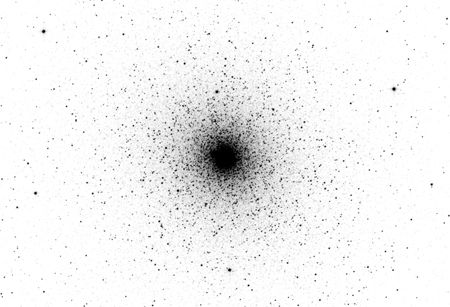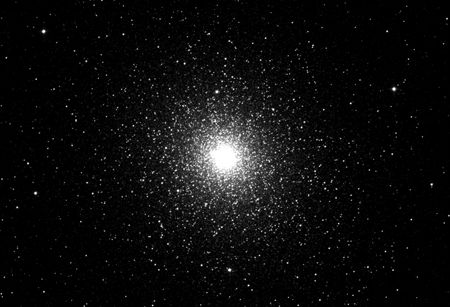| Mag | 3.95 |
|
Classification: |
| Size | 50.0' | Estimate: III | |
| Distance | 15,000 LY | Actual: III |
 (Click to enlarge) |
 (Click to enlarge) |
| Date/Time | 08/13/2017 13:35:23 UTC | Image Size | 41.4 x 28.2 arcmin |
| Observatory | Dubbo | Orientation | North is up, East is left |
| Location | -32.2936281,148.5833049 Dubbo, NSW, Australia |
Image Center | 00h 24m 05.472s, -72° 04' 29.661" |
| Interface | Remote: tenbyobservatory.com | # of images | 5, stacked |
| Telescope | 17" Planewave CDK f/6.8 | Exposure | 60 seconds each |
| Camera | SBIG 11000 | Filters | Luminance |
| Pixel Scale | 2.49 arcsec/pixel | Processing | Logrithmic stretch in FITS Liberator |
| Binning | 1x1 | Astrometry | nova.astrometry.net |
Interesting Facts
"The second largest and second brightest globular cluster in the skies is situated so far south that, although a conspicuous naked-eye object, [47 Tucanae] was not discovered by astronomers before 1751, when Abbe Nicholas Louis de Lacaille discovered and cataloged it in his List of Southern NebulousObjects."
"The stars of 47 Tucanae are spread over a volume nearly 120 light years across. At their distance of 13,400 light years, they still cover an area of the sky of about the same apparent diameter as the Full Moon, about 30 minutesof arc. 47 Tucanae is approaching us at roughly 19 km/s." - Globular Clusters by the Longmont Astronomical Society.